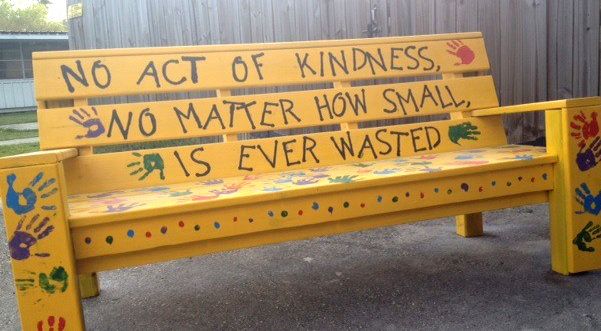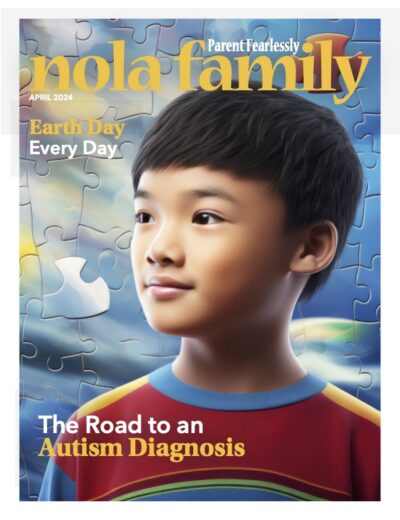
When Children On The Spectrum Are Victims of Bullying
Ethan Marengo is a 10 year old with Asperger’s syndrome, an autism spectrum disorder. He is a smart, fun-loving kid in the fifth grade at a middle school in Covington, but his mom Shelley says he still gets singled out by his classmates.
“He doesn’t come home and tell me that he was bullied, because part of Asperger’s is his inability to pick up on social cues. But there are times when other children are cruel to him,” says Shelley. “Sometimes, he comes home and is very quiet and seems depressed. I initiate the ‘how was your day’ conversation with him and hint around to what I have already been told by his teachers. Then he will tell me.”
Pushing their buttons
A recent study by the Interactive Autism Network (IAN) showed that 63 percent of children on the spectrum were victims of bullying—nearly five times the rate as the same-aged general population. It’s becoming a public health problem, says Lisa D. Settles, Psy. D., as it increases depression, halts social development and prevents children with ASD from feeling safe in school.
Dr. Settles is a licensed clinical psychologist, assistant professor of clinical psychiatry and the clinical director at the Tulane Center for Autism and Related Disorders. Ethan attends her social skills class; many of his classmates are also bullied in school.
“They do things that typical peers consider odd or awkward,” Dr. Settles says. They can get fixated on topics that most people don’t have knowledge about, or interest in, she explains. And some have odd hand mannerisms, like repetitive-type behaviors. “They’ll do those when they get anxious and nervous, so it sort of sets them apart from other kids.
The study published by IAN found “ill-intentioned peers” enjoy pushing a child with ASD into an aggressive outburst because they think it’s funny to others in the classroom. Also, those on the spectrum typically don’t understand a lot of social cues that others would—like sarcasm or annoyance—which makes them easy targets.
“Communication is 70 percent nonverbal, and they don’t get nonverbal,” says Dr. Settles. “It can make it very difficult; there is a huge gap between a typical kid and a kid on the spectrum.”
Autism Spectrum Disorders range from mild to severe. “Think about it more like a musical equalizer, like on the old radios where you can push up the bass, turn down other sounds,” says Dr. Sellers. “That’s really what it’s like for kids on the spectrum. Some kids have their bass turned all the way up and it can be anywhere along there.” Many children with ASD are high-functioning, with average or high IQs and strong verbal skills. But their communication style is still poor, and they’re even more likely to be bullied, according to the IAN study—most likely because they are in mainstream classes where they’ll stand out for being different.
Safety zone
Safety zone
Parents of children affected by the disability can sometimes turn to taking their child out of school to homeschool them, says Dr. Settles, but this is damaging to the child’s social growth. Ethan has had a hard time finding a playmate during recess, his mom explains.
“Children tend to exclude him because they sense that he is different,” she says. Her son enjoys talking at length about topics that interest him—whether or not others want to hear about them. He’s also not coordinated enough to enjoy playing sports.
The Buddy Bench was the brainchild of a second grader in Pennsylvania two years ago to provide a safe place for children who feel left out. When a child sits on a ‘buddy bench’ during recess, he signals to others on the playground that he wants a buddy. Shelley had heard about the concept, and liked how the buddy bench provided opportunities for children who may be shy, new to the school, or have some sort of disability. Months later, it came to mind when she picked up Ethan and heard about how he had spent his recess: reading a book by himself.
“I asked him if anybody else read during lunch or recess. He replied, ‘Nope, they are all eating and talking and playing with their friends. I am just unique like that.’” She says she smiled at him and told him he was indeed very unique. “He just turned his head and stared out the window.”
Shelley decided to the buddy bench would help. She worked with the Exchange Club of West St. Tammany and Northshore Families Helping Families to get 55 of the benches slated for placement in elementary and middle schools in the St. Tammany Parish School System. While the dedicated benches may not cure the bullying of ASD children and adolescents, it’s a step in the right direction, Shelley believes. She is also thankful that the principal at her son’s school has taken an active role in educating and bringing ASD awareness to her staff.
“Children with Asperger’s are often overlooked as having special needs because their outward appearance is ‘normal,’” says Shelley. “But on the inside they are wired differently. For them it is a tremendous struggle just functioning daily in our sensory-rich world.” And that’s without the unwanted attention of bullies.
by Nicole Koster
For tips on how to help your child from being a victim of bullying, click here.

